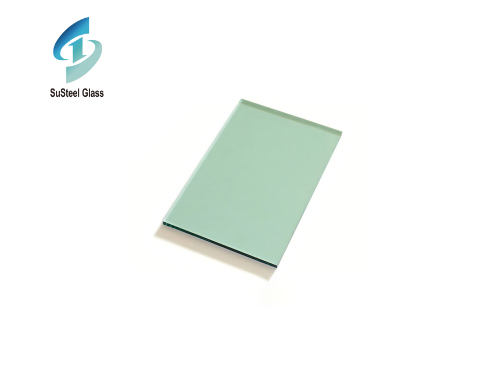Anti-blast glass, also known as blast-resistant glass or explosion-resistant glass, is a specialized type of glass designed to withstand the impact of explosions and mitigate the effects of blast waves. In this article, we explore the features, design considerations, and applications of anti-blast glass.
1. Protection:
Anti-blast glass is engineered to provide protection against the destructive forces generated by explosions, including shock waves, debris, and fragments. It is composed of multiple layers of glass and polymer interlayers that are laminated together to create a strong, flexible, and shatter-resistant barrier. In the event of an explosion, the laminated construction of anti-blast glass absorbs and dissipates the energy of the blast, preventing the glass from shattering and reducing the risk of injury to occupants and damage to property.
2. Design Considerations:
Several factors are considered in the design and manufacturing of anti-blast glass to ensure its effectiveness and reliability:
Thickness: Anti-blast glass is typically thicker and more robust than standard glass to withstand the forces of explosions. The thickness of the glass layers and interlayers is determined based on the anticipated blast pressure and the level of protection required.
Laminated construction: Anti-blast glass consists of multiple layers of glass and polymer interlayers bonded together through a lamination process. The interlayers serve to hold the glass fragments together upon impact, preventing them from dispersing and causing injury or damage.
Fragment retention: The design of anti-blast glass focuses on retaining glass fragments within the laminated assembly, even under extreme blast conditions. This helps to minimize the risk of secondary injuries from flying debris and enhances the safety of occupants.
Blast resistance testing: Anti-blast glass undergoes rigorous testing in specialized facilities to assess its performance under simulated blast conditions. Testing methods include shock tube testing, explosive charge testing, and pressure impulse testing to evaluate the glass's ability to withstand blasts of varying magnitudes and durations.
3. Applications:
Anti-blast glass is used in a wide range of applications where protection against explosions is essential:
Government and military facilities: Anti-blast glass is installed in government buildings, embassies, military installations, and high-security facilities to safeguard occupants and assets from terrorist attacks and acts of vandalism.
Critical infrastructure: Anti-blast glass is used in critical infrastructure such as power plants, transportation hubs, and telecommunications facilities to protect sensitive equipment and ensure continuity of operations in the event of an explosion.
Commercial buildings: Anti-blast glass is increasingly being specified in commercial buildings such as office towers, financial institutions, and retail centers to enhance security measures and mitigate the risks associated with urban terrorism and civil unrest.
In conclusion, anti-blast glass plays a crucial role in protecting people and property from the devastating effects of explosions. Through its advanced design, robust construction, and extensive testing, anti-blast glass offers a reliable and effective solution for enhancing the safety and security of buildings and infrastructure in high-risk environments. As threats evolve and security concerns grow, the demand for anti-blast glass continues to rise, driving innovation and advancements in blast-resistant technology.

 High Purity Tin Ingot: Essential Uses and Key Advantages
High Purity Tin Ingot: Essential Uses and Key Advantages
 Burglar-Resistant Glass: Enhancing Security and Peace of Mind
Burglar-Resistant Glass: Enhancing Security and Peace of Mind
 Exploring the World of Green Tinted Glass Products: Versatility and Sustainability
Exploring the World of Green Tinted Glass Products: Versatility and Sustainability
 Exploring the Versatility and Elegance of Custom Thick Glass
Exploring the Versatility and Elegance of Custom Thick Glass

